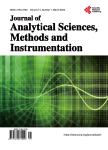Ways of Analysis of Fire Effluents and Assessment of Toxic Hazards
Ways of Analysis of Fire Effluents and Assessment of Toxic Hazards作者机构:Department of Forensic Science King Fahad Security College Riyadh Saudi Arabia
出 版 物:《Journal of Analytical Sciences, Methods and Instrumentation》 (分析科学方法和仪器期刊(英文))
年 卷 期:2015年第5卷第1期
页 面:1-12页
学科分类:1002[医学-临床医学] 100214[医学-肿瘤学] 10[医学]
主 题:Fire Effluents Volatile Organic Compounds (VOCs) Semi-Volatile Organic Compounds (SVOCs) Polycyclic Aromatic Hydrocarbons (PAHs) Dioxins Isocyanates
摘 要:Fire effluents, in most cases, have an adverse effect on human health and the environment. Exposure to some compounds may show both acute and chronic toxicity. There is a lack of knowledge on the effect of organic products on the human body in terms of the rate of organic material production in fires and their degree of toxicity. Thus, there is a need to expand the scope of studies about the organic products generated from fires and improve the methods of assessment to be included as part of fire hazard assessment. Different factors can be contributed to this lack of knowledge. For example, the composition of organic products generated from fires changes progressively and rapidly with progression of combustion and in a manner that is dependent on the fire condition. It is difficult to identify individual organic compounds produced during combustion. Another key factor is the lack of suitable instruments for measuring organic products generated from a fire. Also, the lack of procedures that are used to evaluate the lethal concentration limits and the lethal dose for a broad range of organic compounds generated from a fire may be another important factor which can be contributed to this lack of knowledge.



